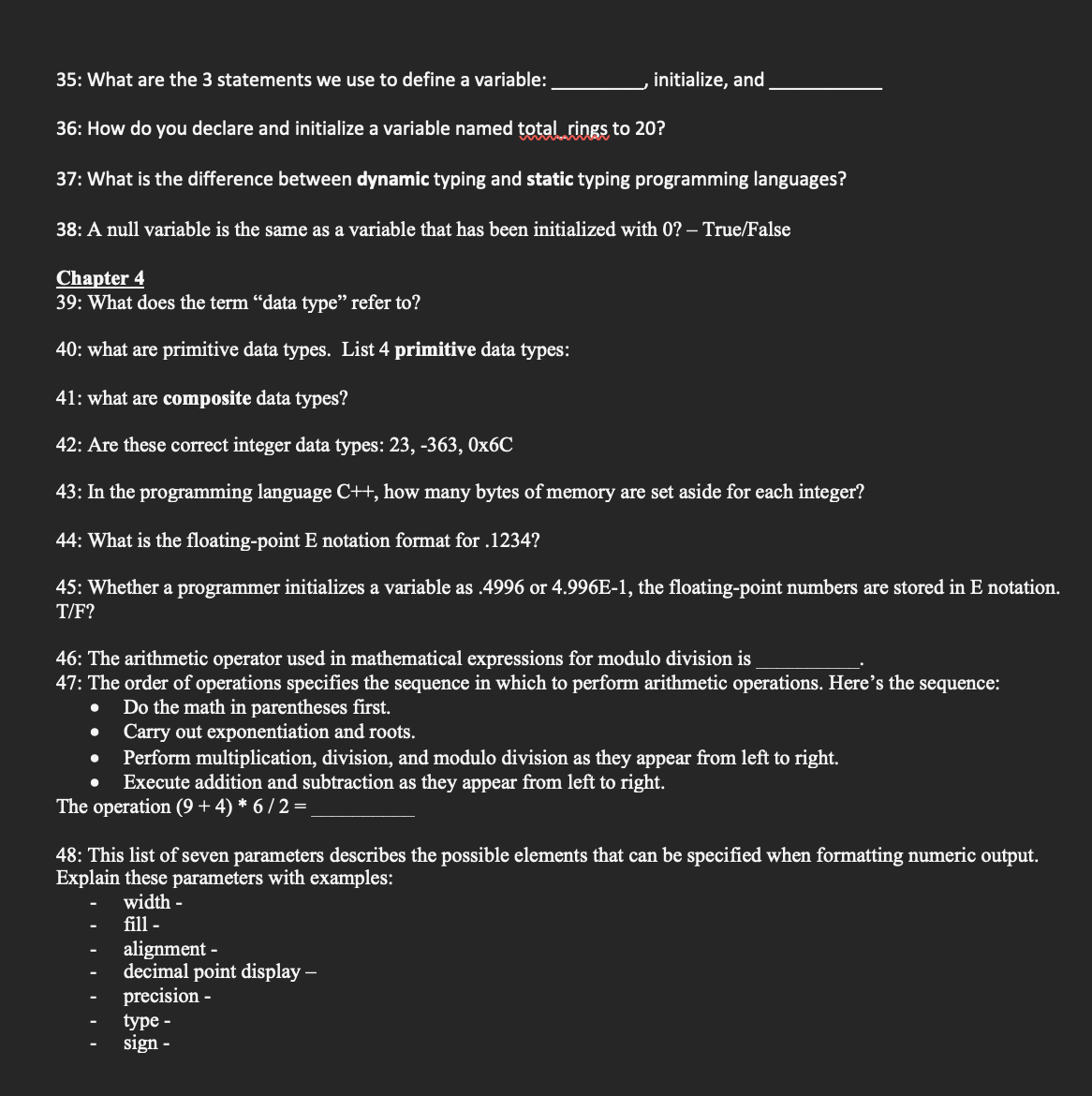Answered step by step
Verified Expert Solution
Question
1 Approved Answer
3 5 : What are the 3 statements we use to define a variable: , initialize, and 3 6 : How do you declare and
: What are the statements we use to define a variable:
initialize, and
: How do you declare and initialize a variable named total rings to
: What is the difference between dynamic typing and static typing programming languages?
: A null variable is the same as a variable that has been initialized with TrueFalse
Chapter
: What does the term "data type" refer to
: what are primitive data types. List primitive data types:
: what are composite data types?
: Are these correct integer data types:
: In the programming language how many bytes of memory are set aside for each integer?
: What is the floatingpoint E notation format for
: Whether a programmer initializes a variable as or the floatingpoint numbers are stored in E notation.
: The arithmetic operator used in mathematical expressions for modulo division is
: The order of operations specifies the sequence in which to perform arithmetic operations. Here's the sequence:
Do the math in parentheses first.
Carry out exponentiation and roots.
Perform multiplication, division, and modulo division as they appear from left to right.
Execute addition and subtraction as they appear from left to right.
The operation
: This list of seven parameters describes the possible elements that can be specified when formatting numeric output.
Explain these parameters with examples:
width
fill
alignment
decimal point display
precision
type
sign

Step by Step Solution
There are 3 Steps involved in it
Step: 1

Get Instant Access to Expert-Tailored Solutions
See step-by-step solutions with expert insights and AI powered tools for academic success
Step: 2

Step: 3

Ace Your Homework with AI
Get the answers you need in no time with our AI-driven, step-by-step assistance
Get Started


